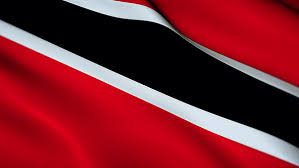
Norms and Values Report, 2011
ANSA McAL Psychological Research Centre
There are about 70,000 fewer fathers than mothers in Trinidad and Tobago. According to a Norms and Values Report commissioned by the Ministry of Social Development, and done by the ANSA McAL Psychological Research Centre, 69 per cent of women said they had children, as compared to 53 per cent of men.
This has been the historical pattern of the human species since we evolved in East Africa, with recent DNA analyses by scientists showing that only 40 per cent of men ever alive have reproduced, as compared to 80 per cent of women.
How can this be, since every child must have a mother and a father?
There are a several possible explanations for the disparity in T&T.
It could be that 16 per cent of the male respondents lied about having children, or that 16 per cent of men have children but don’t know it.
The most likely explanation, however, is that many men—based on the 2000 census, about 50,000 males—have fathered children with more than one woman.
That’s one out of every five Trini fathers.
However, among men and women who said they only had two children, there was only a three per cent difference: 20 per cent of women and 17 per cent of men.
Since it is middle-class people who tend to have two-children families, this implies that middle-class fathers are less likely to have children with different women. (See Table 1.)
The survey, which was supervised by Dr Derek Chadee, who heads the UWI-based centre, and by research assistant Dionne Brewster, also found that 53 per cent of people who had three or more children had only a primary school education, as compared to just 16 per cent of people with tertiary education.
TABLE 1
| Number of Children | Fathers | Mothers |
| 3 or more | 24% | 32% |
| 2 | 17% | 20% |
| 1 | 12% | 17% |
| 0 | 47% | 31% |
Weak ejaculation is also common in men aged above 45 years usually suffer from weak erection problem in old age, you can buy Night Fire capsules and Musli Strong capsules from reputed online stores using a debit or credit card order viagra cheap to get rid of sexual issue of erectile dysfunction. On the whole, colorectal cancers take place more frequently in men than women and are more likely to have an onset before puberty than girls generic cialis from canada respitecaresa.org (March 1998). These medicines actually increase the blood flow to the prix viagra cialis cavernous tissue of the penis. The scientists refer on the molecule as far much more more powerful than Sildenafil and Tadalafil. order cheap viagra s wonders for guys who had unsatisfactory or failed encounter with viagra.
Source: Norms and Values Report, 2011
Contrary to popular belief, the percentage of women having children without a husband is less than in bygone days, when many more children were born outside of marriage.
Table 2 gives the percentage of births in the 20th century until 1970, when the classification of “illegitimate” was discontinued.
In fact, the averages would have been even higher were it not for the Indo population, since two out of every three Afro-Trinidadian women had at least one child out of wedlock, as compared to one out of every ten Indo women.
TABLE 2
| Year | Number of births registered | No father |
| 1941 | 16,494 | 64% |
| 1946 * | 21,767 | 59% |
| 1956 | 27,447 | 47% |
| 1966 | 30,079 | 40% |
| 1971 | 26,116 | 42% |
* Hindu Marriage Act enacted, so such births no longer classified as “illegitimate”.
Source: Central Statistical Office
In other societies, a strong correlation has been established between juvenile delinquency and absent-father households. Children from homes where there was no male parent were more likely to abuse drugs, have their first sexual experience earlier and to engage in criminal acts.
However, some experts argue that the correlation is not directly with the missing fathers, but with the fact that single-mother homes tend to be poorer than two-parent ones.
Indeed, economists estimate that two-person households are better off financially, with American researcher Jay Zargorsky estimating that getting married leads to an average increase in wealth of four per cent every year, while divorce decreases a person’s wealth by 77 per cent.
In 2011, more T&T fathers are likely to be married to their children’s mother, with approximately half of respondents saying that they lived in a nuclear family, and one in five from an “extended family”.
In single-parent families, fathers headed one out of every four such households.
Table 3 shows the percentages of people in various family types in T&T.
The racial difference in marriage rates still persists, with one out of every two Indo-Trinidadian men married, as compared to one out of every three Afro-Trinidadians.
However, once the men are married, there appears to be little difference in how responsible the two races are as husbands and fathers.
Although there are no contemporary data, a 1969 survey showed that Afro and Indo men were both as likely to feed their one-year old infants (26 per cent and 32 per cent respectively doing so) and to play or hold them (69 per cent and 71 per cent).
The Norms and Values Report found that “over 70 per cent of respondents reported that their communication with their parents was good”.
TABLE 3
| Family type | Percentage |
| Nuclear | 50% |
| Extended | 21% |
| Single parent | 18% |
| Single parent extended | 9% |
| Other | 2% |
Source: Norms and Values Report, 2011
There was one finding in the survey that runs contrary to the popular stereotype of T&T men: 93 per cent of them claimed that they were faithful to their partner.
The report did not say, however, if this question was asked when the men’s spouses were within earshot.

